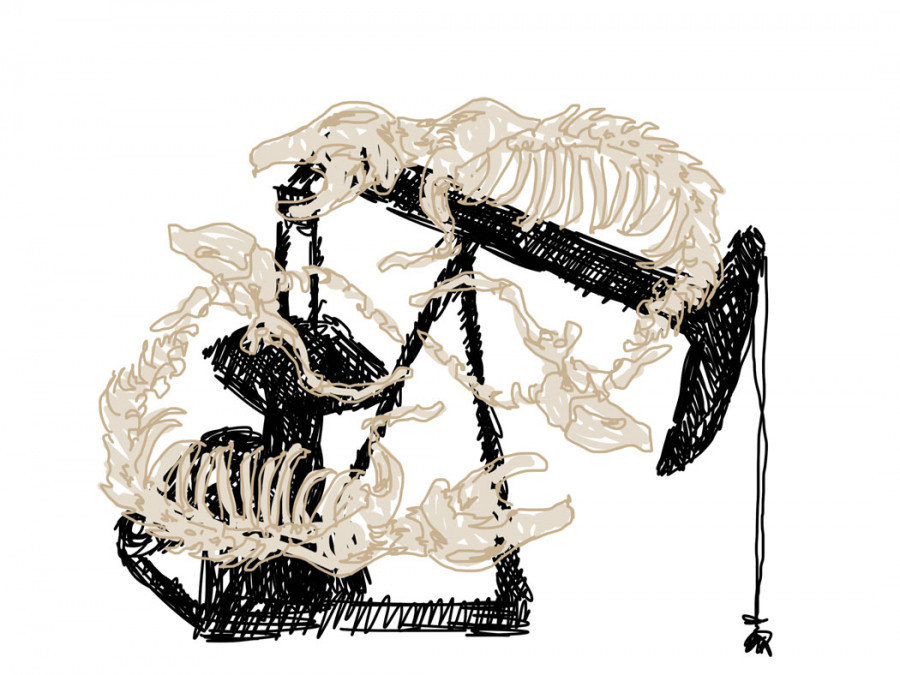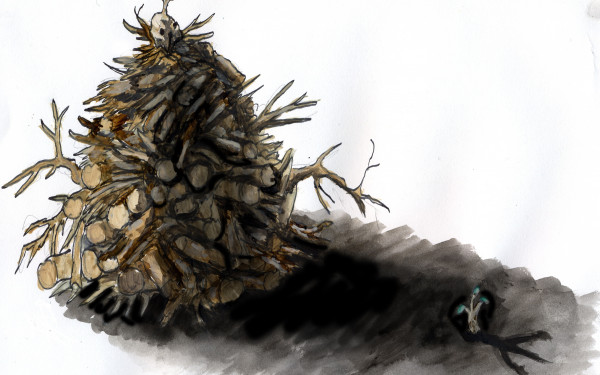Getting Back on Track
Railing Against the Dangers of Oil Transportation
The train derailment at Lac Mégantic left Canada reeling in its wake. The disaster, which occurred on July 6, 2013, took the lives of 47 people. The incident brought into question the security concerns that surround railway transportation of hazardous goods.
Daniel Green, former Green Party candidate and environmental ecotoxicologist, was at Lac Mégantic five days after the disaster. He studied soil contamination and air pollution caused by the derailment.
“The Lac Mégantic accident—and this is based on the coroner’s report, after the 47 deaths and the transportation safety board report—all said the same thing: that this was an avoidable accident,” Green said.
Cross-Canada Oil Transportation
Peter Stoett, director of the Loyola Sustainability Research Center and political science professor at Concordia, claims that there has been a “remarkable” increase in oil transportation over the last two decades.
The Canadian Association of Petroleum Producers released a document in March 2014, outlining the recent increase in crude oil transportation by rail.
The number of Canadian rail cars transporting crude oil increased from 4,000 in Jan. 2000, to over 16,000 in Jan. 2014.
That’s an increase of 1.1 million tonnes of crude oil being transported by rail in 14 years, according to the CAPP report.
The report also forecasted an increase in the volume of crude oil being transported from 200,000 barrels per day in late 2013 to 700,000 barrels per day by the end of 2016.
Stoett admits that, due to the faltering state of the oil market, the amount of oil being transported has recently dropped.
Michael Bourque, president of the Railway Association of Canada, called the reported increase “misleading” and “wrong.”
“The fact is that we moved very little crude oil before five years ago, and the vast majority of crude oil has only moved in the last three or four years,” Bourque explained.
“Often you would get these crazy percentages that people were quoting for the increase, and that’s because you were starting almost at zero.”
Less than 5 per cent of all crude oil is moved by rail, Bourque said.
However, according to the CAPP report, oil transportation via rail car is going to see an increase due to a “three to five year period of constrained pipeline capacity” because of the current expansion work being done on the various pipelines.
New Regulations
While making clear that he doesn’t want to condemn the railway industry as a whole, Stoett believes Canada needs more regulation.
“It’s clear that in the future, and even in the present, we have to move towards a tighter regulatory regime if we’re going to continue to ship these massive quantities of fossil fuel energy,” he said.
Stricter regulation was called for following Lac Mégantic. Canada’s Minister of Transport issued a Ministerial Order in 2014 that was meant to increase safety regulations for railway companies.
Some of the new rules include implementing a 40 mile-per-hour speed limit for trains transporting one or more hazardous or toxic materials.
“For many years there have been speed limits through cities when you have certain classes of materials, and those requirements have become tighter since the accident in Lac Mégantic,” Bourque explained.
The order also required a risk assessment before launching a train carrying hazardous goods, and demanded regular updates on any changes that might occur during the transportation process.
Green is not convinced that the current regulations are sufficient.
“We have to completely modify the Railway Safety Act of Canada,” he said. “We have to reinvest in transport Canada inspections. When we change the Railway [Safety] Act, we’re going to have to massively reduce the power that the railway companies have.”
Green called for an independent body to have control over railway safety.
“The companies can do all the safety programs they want to, but it has to be mandated, regulated and inspected by independent inspectors hired by us—Canadians—and not hired by the railway companies, because they are definitely in a conflict of interest,” he said.
Improving Infrastructure
Stoett believes that modernizing railway infrastructure is part of the solution.
“We’ve got an infrastructure system that is basically not designed to cover the mass that’s currently being demanded of it,” he explained.
Bourque said the railway industry has had recent success in their efforts to increase the standard of tank cars used to transport crude oil.
“We’ve been pushing for a tank car that has more protection, thicker steel, and more insulation—features that have been found in accidents to be deficient by the Transportation Safety Board,” he said.
The government of Canada has introduced a new tank car called the TC-117, which they say is tougher and offers better protection than the currently used DOT-111 model. The final DOT-111 cars will be phased out by 2017, but Bourque said it could happen as late as 2025.
“Let’s take advantage of the opportunity to move towards the most advanced technology we can use in transportation—whether it’s pipelines, trucks or trains—and let’s try and make it into a sort of Canadian project,” Stoett said. “We certainly have the engineering talent in this country to work on that.”
Bypass Lines
Green would like to see the introduction of what he calls “bypass lines,” which would allow rail cars transporting dangerous goods to travel around populated areas rather than through them.
“This is a major proposal that essentially is being put forward by many municipalities,” he said.
Lac Mégantic is trying to secure federal funding for a bypass railway line, according to Green.
“One way to reduce risk is to start looking at building bypass lines, so dangerous cargo will avoid high density areas,” he said.


_600_832_s.png)


_600_375_90_s_c1.jpg)
_600_375_90_s_c1.jpg)
_600_375_90_s_c1.jpg)